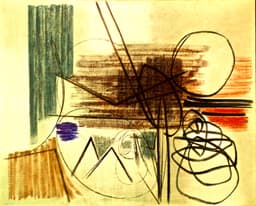
Hans Hartung
@hans-hartung
Hans Hartung: Pioneer of Abstract Expressionism
Hans Hartung stands as one of the twentieth century's most influential abstract artists, bridging European modernism with American abstract expressionism. Born in Leipzig, Germany in 1904, this visionary painter became a French citizen in 1946, ultimately reshaping the landscape of contemporary art before his death in 1989.
Hartung's artistic breakthrough came through his development of a uniquely dynamic visual language characterized by energetic gestural marks, sweeping lines, and explosive compositions. He pioneered what became known as "tachisme," an abstract expressionist movement emphasizing spontaneous, intuitive mark-making over representational imagery. His work rejected traditional subject matter entirely, instead celebrating the pure expressive potential of color, line, and movement across the canvas.
Throughout his prolific career, Hartung created thousands of works including major pieces like "T1956-27" and "Composition" series, which demonstrated his mastery of controlled chaos and emotional intensity. He experimented extensively with various techniques, from dripping paint to using unconventional tools that allowed him to achieve unprecedented textural effects. His paintings possessed a musical quality, with rhythmic compositions that seemed to dance and pulse with vitality.
Beyond individual masterpieces, Hartung fundamentally influenced how artists conceived abstraction itself. He demonstrated that non-representational art could convey profound emotional depth and intellectual rigor simultaneously. His work bridged the gap between European constructivism and American action painting, proving these movements were complementary rather than competing.
Today, Hartung's legacy resonates through contemporary art practices. His revolutionary approach to gesture and spontaneity remains foundational to abstract painting instruction worldwide. Major museums feature his works prominently, and his contributions are recognized as essential to understanding modern art's development. Hartung ultimately proved that abstraction could be as compelling and communicative as any figurative tradition.